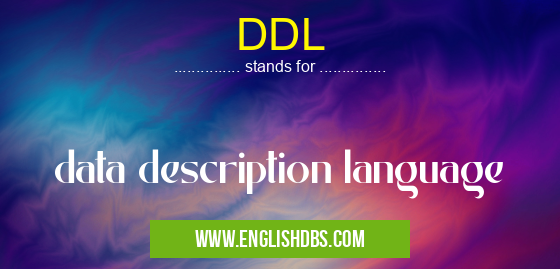What does DDL mean in LANGUAGE & LITERATURE
Data Description Language (DDL) is a syntax used to define and manage data structures within a database. It is used to describe the organizational structure in which data is stored and accessed, allowing for the definition of tables, views, schemas, constraints, triggers and much more. DDL commands are used to create databases and specify its objects such as tables, views or triggers. With DDL commands users can add new information or modify existing information that already exists in the database.

DDL meaning in Language & Literature in Academic & Science
DDL mostly used in an acronym Language & Literature in Category Academic & Science that means data description language
Shorthand: DDL,
Full Form: data description language
For more information of "data description language", see the section below.
What Is Data Description Language Used For?
Data Description Language (DDL) is primarily used to define and maintain data structures in a relational database management system (RDBMS). It helps to define what type of data will be stored in a table or an index and provides instructions on how this data should be structured. DDL statements are also used for granting permissions on specific database objects like tables and views. DDL commands are also often used for creating/dropping/altering tables, indexes, views and other database objects. They are also sometimes used for creating temporary or permanent tables with specific constraints like unique or primary keys.
Benefits Of Using Data Description Language
Using Data Description Language (DDL) offers several advantages over manual methods of managing databases. Firstly, it provides significant speed increases when compared with manual methods - creating a table manually may take hours whereas running the same command through DDL takes seconds. Secondly, it makes it easier to keep track of changes made to database structures as versions are preserved when changes are made by any user with sufficient permissions - making them easy to roll back if necessary. Finally, using DDL allows for greater control over the security of database structures as access privileges can be defined explicitly for each individual object within the database structure — including both read/write permissions as well as restrictions from alteration.
Essential Questions and Answers on data description language in "SCIENCE»LITERATURE"
In conclusion, using Data Description Language (DDL) is an invaluable tool for defining and managing complex databases within an RDBMS environment - offering fast development times, immutable record keeping options and robust security controls when combined with suitable authorization mechanisms such as role-based access control (RBAC). By utilizing this versatile language developers can save time when constructing new databases while guaranteeing safe storage of valuable digital assets.
